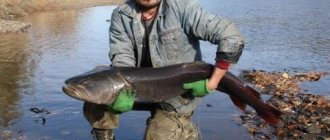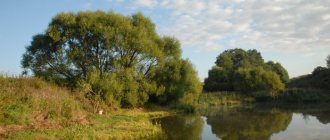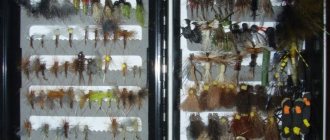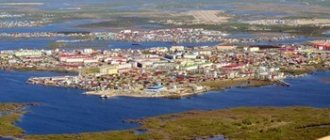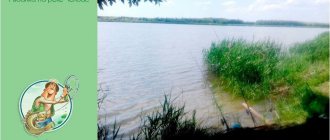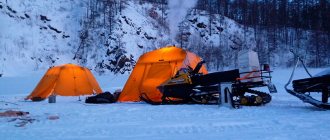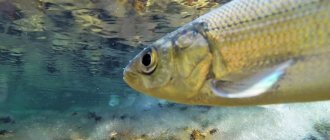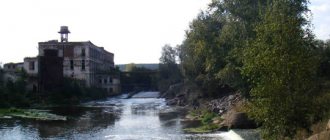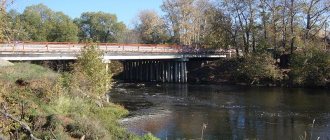Fishing in the Komi Republic
This type of tourism as active tourism is becoming increasingly popular.
One of the types of active tourism is fishing tourism. Fishing is an economical holiday option. Fishing is popular all year round and is available to everyone. But not every tourist knows where they can go to relax and go fishing in Russia during their vacation. If you contact a travel agency, you will be offered numerous options for regions where there are a lot of fish and beautiful places to relax; one of such places is the Komi Republic. The Komi Republic has long been famous for its rich rivers and experienced fishermen. Fishing for local residents is not only recreation, but also a way of obtaining food.
The following fish are found in the waters of the Komi Republic:
1. Salmon - in the Pechora, Vychegda, Sysola rivers.
2. Pike. - In almost all lakes and rivers of the republic.
3. Bream. — In all rivers and lakes of Komi.
4. Roach. — more than 10 species of this fish are found in the rivers of the Komi region.
6. Burbot and other types of fish that are found in fresh water bodies.
The most accessible transfer plan for tourists will be the Ust-Kulomsky district of the Komi Republic. The area is famous for Lake Don, the Vychegda and Nem rivers.
Lake Don (Don you)
Lake Don is the property of the republic; it is a beautiful lake, which is surrounded by pine islands and marshy shores. In the Don you can catch fish: ide, burbot, pike, roach, perch, ruff, crucian carp. In the northern part of the shores of the lake there are tourist recreation centers where you can cook and taste fresh fish. The recreation center can be reached by boat. The owners of the base will offer tourists a Komi bathhouse and treat them to national dishes. In the evening you can light a fire near the shores of the lake, cook fish soup and continue fishing.
Fish are caught in the lake with a fishing rod, donkeys and spinning rods. If you do not have an accompanying fishing master, then local residents will be happy to show you a master class on fishing. They will give lessons on obtaining bait, the fishing process and preparing fish dishes.
Fish biting forecast on the Vychegda River
| Weather forecast and fish bite | Calendar, from 01-07-2021 to 04-07-2021 | |||||||||||
| Thu | PT | SB | VS | |||||||||
| Times of Day | Evening | Night | Morning | Day | Evening | Night | Morning | Day | Evening | Night | Morning | Day |
| Cloudiness, precipitation | Partly cloudy | Mainly cloudy | Mainly cloudy | Partly cloudy | Partly cloudy | Partly cloudy | Clear | Partly cloudy | Partly cloudy | Clear | Clear | Clear |
| Temperature °C | 18 | 14 | 7 | 17 | 21 | 14 | 9 | 13 | 21 | 14 | 5 | 15 |
| Pressure, mm. | 762 | 763 | 763 | 762 | 761 | 761 | 762 | 764 | 764 | 766 | 768 | 768 |
| Direction, | North wind | North wind | Wind northeast | North wind | Wind northwest | Wind northwest | North wind | Wind northeast | North wind | Wind northeast | Wind northeast | Wind northeast |
| wind speed | 3 m/s | 3 m/s | 2 m/s | 2 m/s | 4 m/s | 2 m/s | 3 m/s | 3 m/s | 4 m/s | 3 m/s | 2 m/s | 1 m/s |
| According to the forecast, they will bite on: maggot, mastyrka, worm, corn crucian carp | 75% | 65% | 75% | 65% | 90% | 90% | 85% | 65% | 75% | 75% | 85% | 65% |
| According to the forecast, they bite on: corn, potatoes, peas, boilies Carp | 65% | 75% | 85% | 55% | 80% | 80% | 75% | 55% | 65% | 65% | 75% | 55% |
| According to the forecast, the fish will bite on: live bait, spinners, wobblers, and silicone baits Pike | 35% | 10% | 60% | 30% | 50% | 10% | 45% | 30% | 35% | 0% | 45% | 30% |
| According to the forecast, they will bite on: worm, leech, small baitfish, spinners, wobblers, silicone Perch | 60% | 0% | 60% | 50% | 75% | 0% | 70% | 50% | 60% | 0% | 70% | 50% |
| According to the forecast, they will bite on: maggot, worm Ruff | 55% | 30% | 55% | 55% | 70% | 55% | 65% | 55% | 55% | 40% | 65% | 55% |
| According to the forecast, the fish will bite on: spinners, wobblers, cherries, corn, grasshoppers Chub | 75% | 35% | 55% | 60% | 95% | 70% | 70% | 60% | 75% | 50% | 70% | 60% |
| According to the forecast, the fish will bite on: worm, mayfly, spinner, artificial fly Grayling | 55% | 0% | 55% | 40% | 75% | 0% | 65% | 40% | 55% | 0% | 65% | 40% |
| Bait: oparysh, peas, wheat, pearl barley, worm Bream | 70% | 50% | 60% | 40% | 90% | 80% | 70% | 40% | 70% | 60% | 70% | 40% |
| Bait: no Burbot | 0% | 0% | 0% | 0% | 0% | 0% | 0% | 0% | 0% | 0% | 0% | 0% |
| Bait: parsley, caddis fly, dough, pearl barley, wheat Roach | 60% | 0% | 80% | 45% | 75% | 0% | 70% | 45% | 60% | 0% | 70% | 45% |
| Bait: oparysh, mastyrka, worm, corn, pearl barley Bleak | 75% | 0% | 65% | 70% | 85% | 0% | 80% | 70% | 75% | 0% | 80% | 70% |
| Bait: sponge, leech, worm, spoon, wobbler Ide | 55% | 25% | 45% | 40% | 75% | 60% | 60% | 40% | 55% | 40% | 60% | 40% |
Vychegda River.
The Vychegda River is divided into three parts: Upper, Middle and Lower. It begins in the village of Ust-Nem, Ust-Kulomsky district, and connects with the Sysola River, on which stands the capital of the Komi Republic, Syktyvkar. Vychegda is wide and deep. The current is fast and strong.
The Vychegda River is rich in almost all types of fish. In the spring, Salmon enters the Vychegda; the fish go to spawn to the upper reaches of the Vychegda. It is impossible to catch salmon during spawning, since it is listed in the Red Book, but if it falls on a fisherman’s bait, he will not refuse it. Pike, perch, burbot, crucian carp and roach are often found. While fishing on the Vychegda River, you can enjoy the landscape of the area. In spring, ships and boats float along the river. On the banks of the Middle and Upper Vychegda there are forest huts where tourists can relax and spend the night.
Fishing on the Vychegda River
05/23/2014 admin
A classic of fishing literature, Leonid Pavlovich Sabaneev, once wrote, “The largest pikes are apparently found in the northern River and other northern rivers,” and this was not so long ago - only a century and a half ago. Only the right tributary of the Northern Dvina enjoys such fame - it has been awarded it. So what kind of river is this - Vychegda and what kind of fishing ? It is serious in a northern way - wide, sparsely populated with a leisurely current and headwinds, but its open valley, yellow shallows and flooded meadows add a touch of warmth to the harsh taiga appearance.
The Vychegda River begins in the remote taiga of Komi and flows into the Northern Dvina at Kotlas station. Its channel flows around numerous gently sloping islands and islets, around wide sandy beaches, dividing them into parts and leaving oxbow lakes. If the main river is dominated by predators - pike, perch, burbot, whitefish, then bream, large roach, and crucian carp find refuge in the overgrown oxbow lakes. Conventionally predatory fish - ide and chub - are found in both places.
I had planned a fishing rafting along the Vychegda River for a long time and had been putting it off for just as long, so when my friend Alexander and I finally decided to get involved in this adventure, we only had the last five days of our vacation at our disposal, so our route was not particularly original.
Getting off the Moscow-Vorkuta train at Mezheg station, near the railway bridge, we pumped up our two-seater boat and moved downstream of the Vychegda, guided by the “from pick-up to lunch” principle, that is, planning to complete the rafting in any locality as soon as our vacation ends.
A motorboat with a trolling operator was cruising right under the bridge. Spinning at low speed between the supports and below, the fisherman snatched a small bee from the water every ten minutes. Another angler, a floater, was working his fishing rods in the grass next door: roaches and dace periodically flew over the water. Perhaps these were only live bait, and the main fishing was planned at dusk. After complimenting Vychegda, Sabaneev writes that the most successful pike fishing is done in these places using a “track” - a “running spoon”. I must say that the “path” suited us perfectly. We agreed to a much smaller trophy.
The Halco wobbler went deeper, I sat on the oars, and Alexander, armed with Sabaneev’s classic work and an atlas and holding the spinning rod under his arm, began his duties as a navigator. At the end of August there is a current on the Vychegda, but it is quite weak. Near the sandbanks it is almost absent and winds like a ghostly stream from shore to shore. Chase him all over - up to half a kilometer! - the width of the river was unproductive, and we kept our oar speed almost the entire way in still water - exactly 5 km/h, judging by the mileage navigation signs on the shore.
On the first evening of the hike we were visited by a huge gray owl. Having leisurely circled over the fire, she sat down on a nearby tree and patiently waited for us to zip up the tent from the inside. In their native element, our northern owls are sometimes bold to the point of recklessness: two years earlier, on the banks of the Dvina, early in the morning, an owl, with its claws out, bravely attacked my gray-green “Kalina,” whose rounded shape really resembled a rare large mouse. The predator turned away only at the last moment, remaining unharmed and without scratching the car. In the morning, the bag of food lying under the boat turned out to have holes in it, and the corner of the Mezheg pie with cabbage was modestly nibbled off.
Even not very loud sounds on a wide river can be heard a kilometer or more away. If we came across a fishing stop on the shore, then first we heard muffled voices, and only then we noticed smoke. Even the local fishermen had no special ambitions: sitting down with float rods near trees that had fallen into the water, they were dragging rare roaches. Large predators - pike, serious perch, whitefish - took, according to them, very badly.
“Only a wobbler is good for pike, guys,” the locals told us. “Iron and rubber are pampering for our fish; they won’t take it.”
Naturally, exceptions were quickly found to the rule. A small pike took a liking to my classic “blackback”, which I have been unable to tear off or lose for 15 years. From the shore, the red “spinner” Blue Fox worked well: although the color contradicted the name, the squinting fish and small perches were biting regularly. The colors of wobblers and spinners should be bright - yellow, crimson, orange: the water in Vychegda is cloudy due to the sandy bottom and shores. Of course, it is still a long way from the Yellow River, but you can even feel the sandy suspension to the touch, and you can wash your hands without soap. After a sluggish morning bite, I replaced the nondescript copper petal with an acidic lemon one, and the predator seemed to see the light.
When we went fishing on Vychegda, we naively believed that places for parking and overnight stays would not be a problem, but we were mistaken. All open, sun-warmed meadows and hills (of which, by the way, there are few) have long been occupied by villages. There is sand right next to the shore, which in half an hour will get into everything and everyone. The forest clearings turned out to be swamps or were tightly fenced off from the water by windbreaks. There were very small clearings left, where you had to climb steeply along the sand, and most of them had navigation signs. There were also fire pits there - the collective wisdom of Vychegda fishermen, hunters and mushroom pickers did not allow a dry spot with a good view to go to waste. So, on a seemingly deaf and deserted river, we constantly crossed paths with travelers just like us.
One day, late at night, what was heard from the river was not the noise of a motor, but the careful strokes of oars and a knock on the bottom of the boat. The darkness was pitch-black, you couldn’t even see the time on the clock. Perhaps some of the fishermen were left without fuel, but, most likely, someone was checking the gear. Apparently, the fisheries protection on Vychegda knows its business and drove the poachers deep underground, or it was a completely barbaric tackle, like the Astafievsky samolov. Sterlet, by the way, is here.
Russian merchants, industrialists and missionaries - Stefan of Perm, the Stroganovs and their followers moved up the Vychegda, to the Kama and to Siberia, converting the Komi (Zyryans) to Orthodoxy and “pillaring” their settlements with churches that were beautiful in architecture and landscape. In the villages of Tsiliba and Vozhem, which we passed on the penultimate day, churches stand opposite each other on opposite banks. People call this place the “Zyryansky Gate” - this is also the Arkhangelsk region, but historically the Komi land begins here.
Well, for us going down, it is, accordingly, over. It was decided to spend the night on the island. A huge sandy beach with sand compacted by waves to the state of an embankment, depth and current near the shore - it was just a fishing training ground. Hang in there, ides, chubs and pike!
Alas, we did not catch the trophy “Sabaneevskaya” pike. The average weight of caught squinting pups was only 800 g. So, more than a hundred years have passed...
These articles may interest you
- How to feed bream in winter
- How to attach a float to a fishing rod
- Fishing with a line on the river and lake
- How to make a simple fish smoker
- Fishing for roach with pickerel gear
- How to catch herring on the Don
- Fishing in the region: European part of Russia
- Fishing in seasons: summer
- Fishing: open water
- Articles about fishing
Recent Entries
- Fishing with dragnet
- Making Carolina rigs for pike and perch fishing
- How to equip a Volzhanka 46 Fish boat for fishing
- Winter fishing in Finland, what and how
- About setting up the jig when assembling winter tackle
- Fishing on the Tura River in winter in February
- The A-elita vent is visible from afar
- Winter lure “A-Elita” is the best of all
- How to attach a float rig to a fishing rod?
- Installation of float equipment for fly and plug fishing rods
Advanced site search
Group 1 below in site entries
The rivers Pechora and Ust-Tsilemsky district.
The Pechora and Ust-Tsilma rivers are considered a separate “fishing country”. These areas have preserved all the traditions of fishing. In the waters of rivers and lakes located close to populated areas, there are cold-resistant fish. The Pechora River is rich in floodplain lakes. The most famous and fish-rich lake is Yamozero.
In the reservoirs of the Ust-Tsilemsky region and in the Pechora rivers there are fish:
1. Salmon. Salmon is found in large quantities in the protected river Kamennaya Valsa.
The Komi Republic is an abundance of fish and beautiful water places. The people are friendly and welcoming. Local fishermen will show tourists beautiful and rich places in areas where you can relax and have good fishing. All rivers and lakes are environmentally friendly, they contain exclusively healthy and useful fish. The fish here reach 2-3 meters in size, so before you go fishing, stock up on gear. Having traveled to the Komi Republic, you will want to return there again, because the nature is so beautiful and rich that you simply cannot forget your holiday in Komi!
Like, subscribe to the channel, and also visit our website Fisherman's Notes.
Fishing on Vychegda
Seventy kilometers from Syktyvkar there is a wonderful village of Vogvazdino, which is located on the banks of one of the most beautiful Komi rivers called Vychegda. Why did you choose this place, you ask? Yes, because these picturesque places are not so far from the city, and a good road provides fairly close access to the shore even in slushy autumn.
On this Sunday the weather was pleasing with the absence of rain and strong wind. Around nine o'clock in the morning I was already on the river. Having collected the boat and gear, I went down the steep bank and stood on the water. The boat is a single boat made of PVC, without a transom and a motor, only manual drive (simply oars). The weather was cloudy, the wind was from the west, about 3-5 m/s, which was very conducive to fishing.
Going out onto the fairway, I unwound the spinning rod and attached a yellow X-Rap wobbler, already tested on this reservoir, from the equipment. He swam upstream to the opposite bank, where there is a boundary between the current and standing water. The depth in this area is from two to three meters, the bottom is sandy. To my surprise, the bite was pleasing only about forty minutes later: I caught a nice pike. A little more than a kilogram, but she resisted decently. He swam upstream for about another kilometer and a half, turned around and began to slowly float down. Literally twenty meters from the deep spot there was a bite again. I was filled with joy. Another pike, a little larger than the previous one.
Happy that the bite had started, I began to open another spinning rod (although I only use it for fishing from the shore). The boat was slowly being pulled downstream. And suddenly there was a bite again, the tackle was already bent. I thought it was a hook, and was already upset, when suddenly the “hook” moved to the side, the spool crackled. I tried to pull it up, but it didn’t work!
Characteristics of the Vychegda River
The basin area is 121 thousand square kilometers. Its length is 1130 kilometers. The river falls from a height of 179 meters and flows into the Northern Dvina near Kotlas. The depth of the river varies, from 0.5 meters to 6 meters.
The river's topography is quite varied and changes depending on the current. At the very top there are faint hills interspersed with cliffs and voids. In the middle part, sandy shores appear, which change to clay. The lower part is sandy, through which clay or black peat appears. Pebbles and stones may already appear near the water.
The width varies from the upper reaches, where it ranges from 15 to 20 meters in different places, and almost 200 meters in the valleys. In the middle reaches - 80, and in the lower reaches - 30-40 kilometers, and the floodplain - reaches 11 kilometers.
This is interesting: Vyalye Lake: fishing and what kind of fish is found
Catch, fish, big and small!
If they want to promote Komi under the brand “Komi – Fishing Land”, they won’t have to make the slightest effort. Fishing forums are already filled with admiring reports of wonderful catches and multi-kilogram trophies. This is understandable - the region is infinitely rich in water resources. KP-Avia advises you to prepare your fishing rods, but in the meantime, take a look at where there are “cool” places in the republic.
Izhma and Tsilma with tributaries
Izhma and Tsilma look like two sisters. The rivers that form the upper reaches of the Pechora receive delicious salmon into their bosom. But the people in these places do not live solely on salmon; grayling, ide live here, and trout are found.
Due to difficult transport accessibility, the forests and reservoirs of the Izhemsky and Ust-Tsilemsky districts are still full of secrets.
Vychegda and Sysola with tributaries
Almost along its entire length it is the main fishing spot for residents of the capital of the republic and the entire “southern bush”. The pike here is large, and some lucky ones have caught six-kilogram trophies.
Vychegda and Sysola are rich in bream, perch, roach, and sorog. Sometimes you can find delicious pike perch and burbot. And very close to Syktyvkar - at least on the Maksakovskaya courier.
Mezen and tributaries
Despite the fact that the Mezen basin does not take up much space on the map of Komi, it is worth mentioning this river. Its source is in Komi, and excellent pike are found here. Sometimes White Sea salmon passes up the Mezen, but there is not as much of it here as in the lower reaches of the Pechora.
Usa and tributaries
One of the largest northern rivers, very rich in fish. Here you can find not only salmon, but also the real king of the river – taimen. This is the largest representative of the salmon family, reaching a mass of 80 kilograms. Such specimens are not found in Komi, but if you go deep into the taiga for a week and devote your vacation to catching the northern Mobby-Dick, you can return home with a gorgeous fish weighing a couple of tens of kilograms.
The udder and tributaries
The entire central republic fishes on the Vym. The diversity of ichthyofauna will delight even an experienced fisherman: pike, perch, crucian carp, whitefish, grayling, burbot. The names alone make your mouth water, don't you think?
Vashka and tributaries
Vashka is famous because Mikhail Prishvin wrote about it and the nearby “ship thicket”. The author could not ignore the virgin forests of the republic.
Experts say that perch, grayling and pike are found in the Udora region. For these trophies, expeditions are often organized deep into the taiga.
Upper Pechora with tributaries
Where the current quickly carries turbulent waters forward, Pechora is distinguished by its purity. Through the transparent thickness you can almost always see a lot of fish, primarily grayling and omul. Behind them, fishermen rush into the mountains, overcoming themselves and nature itself. They say the fun is worth it!
Middle Pechora with tributaries
Ukhta, Sosnogorsk, Vuktyl, Pechora can boast that they live in almost the most fishing place in the republic. Protected areas, including the YugydVa National Park, allow the ichthyofauna to grow and develop.
The grayling here is large and individuals up to 2.5 kg are often found. Large whitefish are excellently caught, and sometimes nelma are caught. There is a lot of omul, ide and roach take well. And of course, perch, pike and burbot. In general, river fish for every taste!
Fishing on the Vychegda River in winter, spring, summer, autumn
Fishing on the Vychegda River in the Arkhangelsk region and the Komi Republic, what you need to know. This is a large and winding river, most of which flows through taiga forests, and villages and towns are mainly built in open areas. Rafting on this reservoir is popular; the time for this is the second half of summer. The water level drops at this time, the current weakens, and it may not be very good for rafting. But the water becomes warm, and it’s not cold to sleep in a tent on the shore.
The species composition of fish in the river is wide: pike, perch, roach, bream, chub, ide, whitefish, silver bream, burbot, crucian carp and others. So lovers of different types of fishing will find something to catch here.
Pike in Vychegda are well caught using live bait, and among spinning baits they prefer a wobbler or spinner. For some reason, pike like silicone baits less here. Pike can be caught both from the shore and from a boat.
There are a lot of perch here, and this is the most popular fish among spinning fishermen on the banks of the Vychegda River. In addition to perch, you can catch chub and ide using wobblers.
Bream, silver bream, roach, crucian carp are caught in oxbow lakes, or the main river in places where there are sandy beaches. As a tackle, they use bottom and feeder rods with feeders and feeders. The use of bait is mandatory.
Winter fishing on Vychegda is also popular; pike and burbot are caught here on girders. Perch, roach, bream on jigs.
You might be interested in fishing on the Vaga River in the Arkhangelsk region.
If you know more detailed information about this body of water, leave reviews and fishing reports in the comments.
Read also
Alexander Lukashenko: Don’t worry, I’m a patriot like you, we won’t fight with Russia!
The President of Belarus made a number of statements while speaking at a polling station in Minsk during voting in the elections to the House of Representatives
Full version of the audio recording of the conversation between “KP” and Furashov
Shoigu met with the granddaughter of the Hero of the USSR
The colonel died a month before the Victory in the Great Patriotic War and did not have time to receive his well-deserved award documents
Three winners of the competition among housing organizations in Komi have been identified
75 organizations took part in the finals of the “Best Management Company/Houseowners Association” competition
An Open Day was held at the LUKOIL energy center
Usinsk high school students took part in the excursion as part of the All-Russian festival of energy saving and ecology #TogetherBrighter and career guidance work
MegaFon opens an online store on Tmall
The launch of MegaFon's online platform on Tmall, an AliExpress Russia resource, is timed to coincide with the beginning of November sales held by retailers around the world
The finalists of the competition for the title of the best management companies and HOAs in Komi have been announced
75 housing organizations reached the finals
Why do you need a credit history?
Credit history is a snapshot of your financial reputation
Socialism in Cuba is more alive than dead
KP special correspondent Daria Aslamova went to Freedom Island to find out whether the Cubans were disillusioned with their revolution [video, photo, podcast]
Laughing women need to check their hearts, cowards need to check their kidneys, and if they are sad, check their liver.
Commandments and secrets of a therapist with 30 years of experience, Dr. Brauner
How to get money from maternity capital in your hands?
Payments will be accrued until the child turns three years old.
How to get money from maternity capital in your hands?
Payments will be accrued until the child turns three years old.
Taking care of nature: LUKOIL-Komi renews field pipelines
In total, oil workers are reconstructing about 400 km of the industrial network
Without errors or delays: Orenburg region joined the pilot project of the Social Insurance Fund of the Russian Federation “Direct payments”
The Orenburg branch of the Social Insurance Fund and Komsomolskaya Pravda held a round table where they discussed issues of providing public services
Injury-free production
The Orenburg branch of the Social Insurance Fund and Komsomolskaya Pravda held a round table where they discussed the development of public services and advanced approaches to the prevention of industrial injuries
“Baba Lida, where are you?” A concert agency is looking for a famous disco grandma from Komi
A native of the Ust-Kulomsky district is guaranteed free access to star performances
